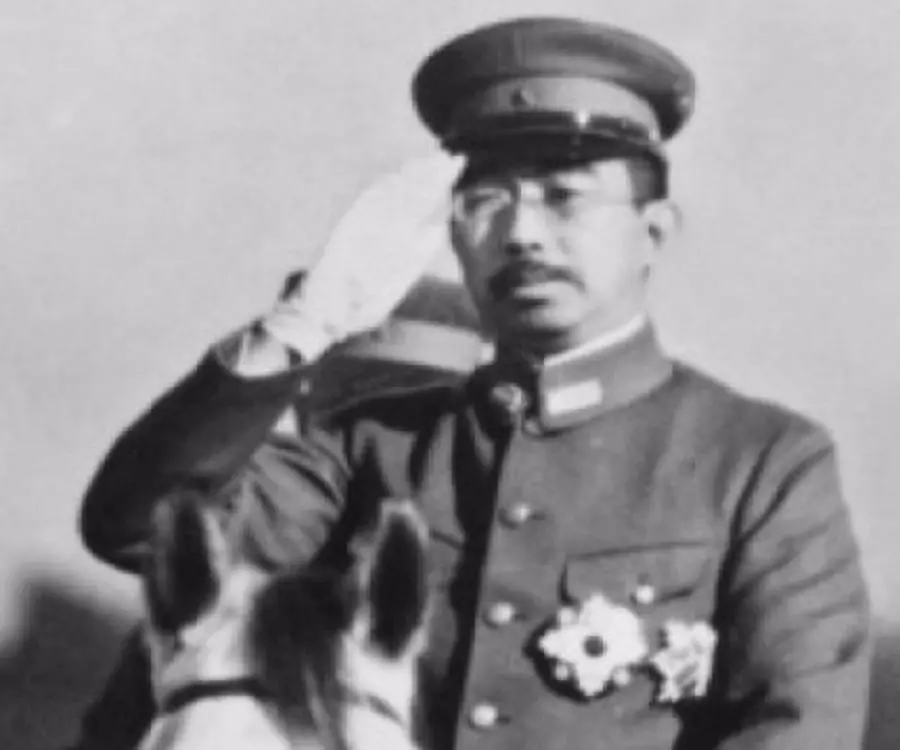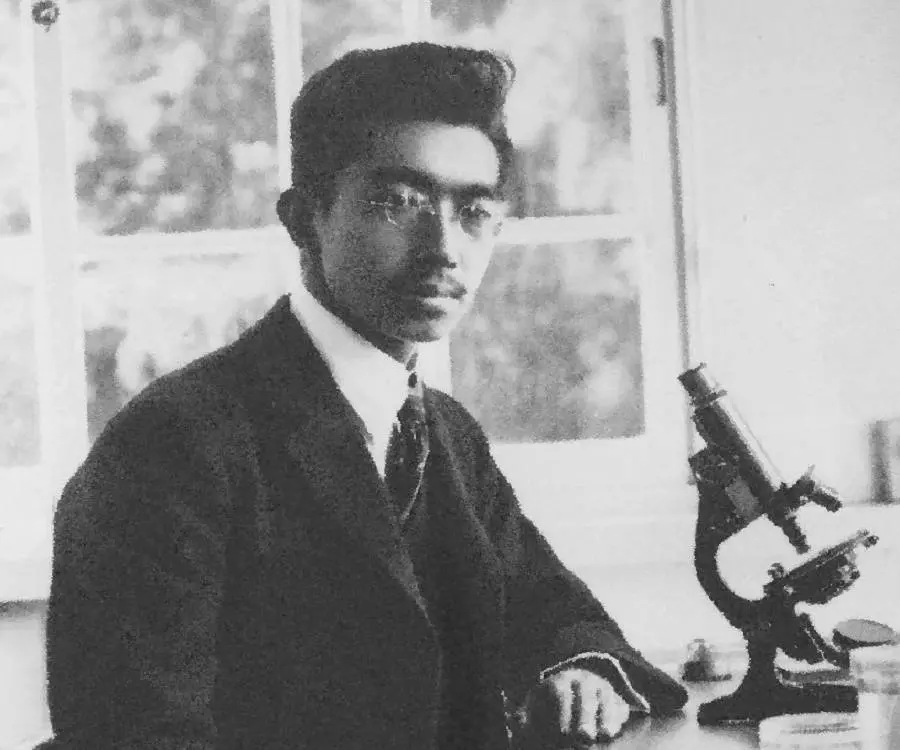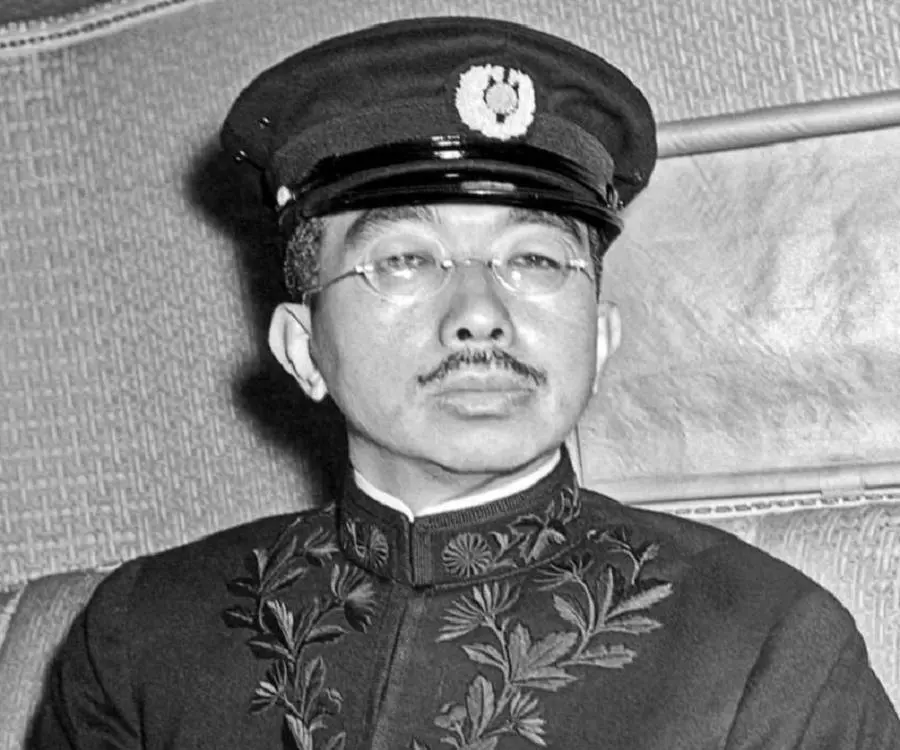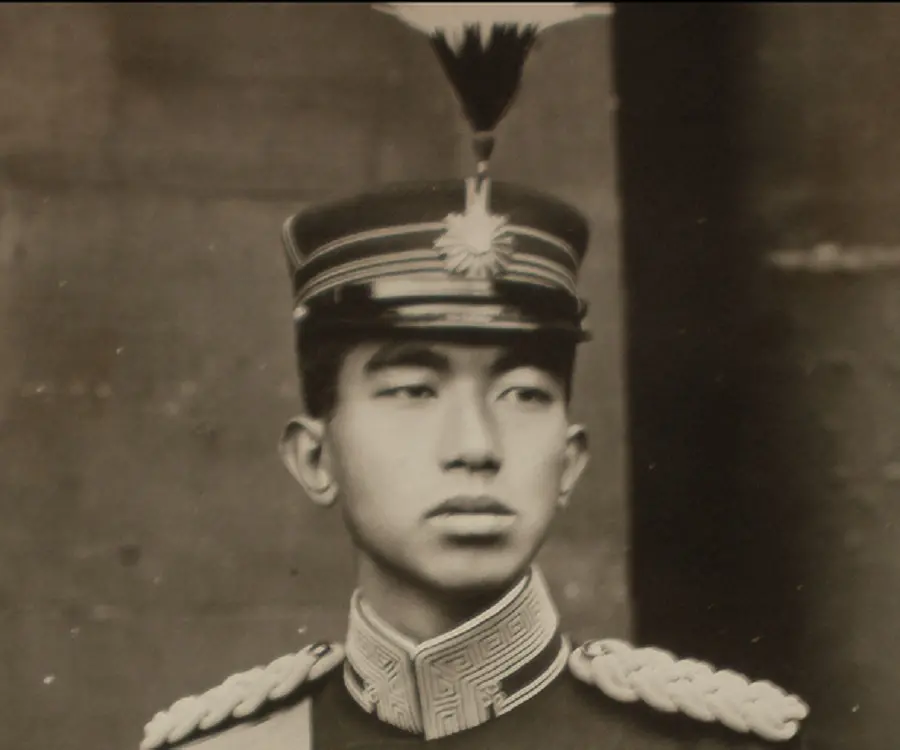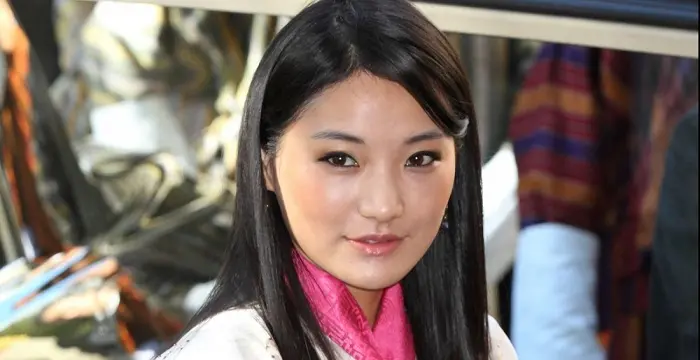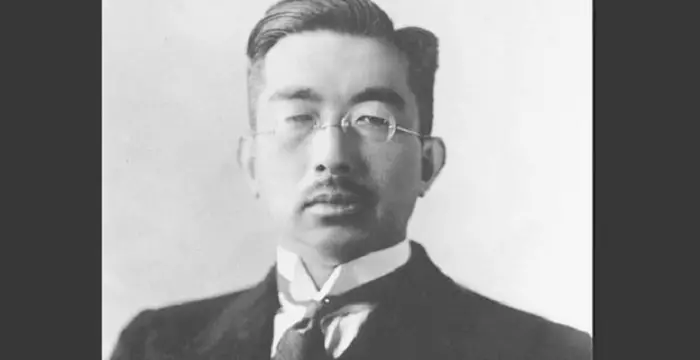
Hirohito - Former Emperor of Japan, Career and Family
Hirohito's Personal Details
Hirohito was the longest-reigning emperor of Japan, who ruled for over 63 years
| Information | Detail |
|---|---|
| Birthday | April 29, 1901 |
| Died on | January 7, 1989 |
| Nationality | Japanese |
| Famous | Historical Personalities, Emperors & Kings, Emperors, Former Emperor of Japan, Kings |
| Spouses | Empress Kōjun |
| Siblings | Nobuhito, Prince Chichibu, Prince Mikasa, Prince Takamatsu, Takahito, Yasuhito |
| Childrens | Akihito |
| Universities |
|
| Birth Place | Aoyama, Minato, Tokyo |
| Religion | Shinto |
| Gender | Male |
| Father | Emperor Taishō |
| Mother | Empress Teimei |
| Sun Sign | Taurus |
| Born in | Aoyama, Minato, Tokyo |
| Famous as | Former Emperor of Japan |
| Died at Age | 87 |
// Famous Emperors
Sundiata Keita
Sundiata Keita was the founder of the Mali Empire in West Africa. This biography profiles his childhood, early life, struggles, founding of empire, rule, administration, achievements and also gives some fun facts.
Ashoka
Ashoka was the third emperor of the Mauryan Dynasty and ruled almost the entire Indian subcontinent. This biography profiles his childhood, life, reign, achievements and timeline
Murad IV
Murad IV was one of the mighty Sultans in the history of the Ottoman Empire. This biography profiles his childhood, family, accession, rule, administration and timeline.
Hirohito's photo
Who is Hirohito?
Hirohito was the longest living ruler in modern history – being the Emperor of Japan for nearly 63 years. By accepting the Chrysanthemum Throne following his father’s death, he became the 124th monarch of Japan during financial crisis and increasing military power within the government. Though he never openly supported the hideous actions of the overpowering military, but he also never legally opposed, thereby making his involvement highly debatable. By entering a treaty with Nazi Germany and Fascist Italy, he was successful in invading and seizing numerous regions in Southeast Asia and the Pacific, apart from Dutch East Indies, New Guinea, Philippines, and British Singapore, besides launching a surprise bombing attack on the US naval base at Pearl Harbor. However, the Americans retaliated and defeated the Japanese troops by dropping atomic bombs on Hiroshima and Nagasaki. He became a popular national symbol post his role in the wartime period, by administering a democratic rule, making public appearances and permitting photos and stories of the royal family being openly published in newspapers and magazines. Besides, he made sufficient efforts in raising Japan from ashes and rebuilding it into the world’s second largest economy, in addition to establishing political stability.
// Famous Kings
Sundiata Keita
Sundiata Keita was the founder of the Mali Empire in West Africa. This biography profiles his childhood, early life, struggles, founding of empire, rule, administration, achievements and also gives some fun facts.
Ashoka
Ashoka was the third emperor of the Mauryan Dynasty and ruled almost the entire Indian subcontinent. This biography profiles his childhood, life, reign, achievements and timeline
Murad IV
Murad IV was one of the mighty Sultans in the history of the Ottoman Empire. This biography profiles his childhood, family, accession, rule, administration and timeline.
Childhood & Early Life
Hirohito was born on April 29, 1901 in Aoyama Palace, Tokyo, as the eldest son of Crown Prince Yoshihito and Crown Princess Sadako.
Following the royal custom of not being raised by the family members, he was sent off to a retired vice-admiral, Count Kawamura Sumiyoshi, when he was just 70 days old and returned back only at the age of 3 following Sumiyoshi’s death.
In 1908, he was enrolled in Gakushuin Peers’ School and later attended a special institute from 1914 to 1921. He was declared as the crown prince and heir apparent in 1916.
In 1921, he became the first Japanese crown prince to travel abroad, embarking a six-month tour to Europe, visiting UK, France, Netherlands, Italy, and Belgium.
Accession & Reign
Upon his return from Europe in November 1921, he was made the Regent of Japan to take over the duties of an emperor, due to his father’s chronic illness.
He was crowned as the Japanese emperor following his father’s death in 1926, which started a new reign ‘Showa’ (Enlightened Peace) while he formally came to be known as Showa Tenno.
He was formally crowned at the enthronement ceremony in November 1928.
At the time of his coronation, Japan was struggling with financial crisis, while the influence of military was increasing.
The increasing Japanese conflicts with China led to the invasion of Manchuria in 1931 by exploding a railway station and seizing it under Japanese control by establishing a puppet state there.
He survived an assassination attempt in 1932 by a Korean independence activist, Lee Bong-chang, in Tokyo.
In another case of assassination the same year, Prime Minister Inukai Tsuyoshi was killed and that marked the end of civilian control of the military.
The assassination of the Prime Minister was followed by an attempted military coup in February 1936, commonly known as 'the February 26 incident'. It resulted in the murders of a number of high government and Army officials.
The continuous attacks and capture of areas in China by the Japanese army led to the Second Sino-Japanese War in 1937, resulting in the large-scale killing of nearly 200,000 civilians and prisoners of war.
In September 1940, he entered into an agreement with Nazi Germany and Fascist Italy through the Tripartite Pact, following which he sent his troops to capture French Indo-china the same month.
When his government decided to battle the United States in 1941, he didn’t oppose, as a result of which the Japanese forces bombarded the US Fleet in Pearl Harbor, Hawaii, and destroyed 18 ships killing around 2,500 men.
Soon after he ordered the bombarding of Pearl Harbor in 1941, Japan succeeded in occupying Dutch East Indies, New Guinea, Philippines, British Singapore and other areas in Southeast Asia and the Pacific until June 1942.
With the Battle of Midway in June 1942, the war tilted in favor of the Americans as they landed at Guadalcanal and Tulagi.
Though he made several efforts to stop the American forces from furthering their territory, it was clear by mid-1944 that the Japanese were nearing defeat.
Fearing his subjects to be imprisoned, he encouraged them to commit suicide, during the Battle of Saipan, offering them an equal spiritual status in afterlife. As such, nearly 1,000 Japanese jumped off ‘Suicide Cliff’ and ‘Banzai Cliff’.
On August 6 and 9, 1945, the United States of America dropped atom bombs respectively on Hiroshima and Nagasaki.
The Emperor announced the surrender of Japanese military forces through a radio broadcast on August 15, 1945, the first for an emperor to address the Japanese people over the radio.
In 1946, he made a second broadcast, announcing his repudiation of imperial divinity in September 1945 while taking responsibility for the war, since he was looked upon as a war criminal and people demanded his trial.
He switched back to his childhood love of marine biology, authoring several books on the subject.
Achievements
It was upon General Douglas MacArthur’s decision to let him retain the throne that he became a democratic head and initiated steps to accomplish political stability, reconstructing Japan as the second largest economy in the world.
He made several tours across Japan during 1945-51 and helped rebuild Japan’s diplomatic image while serving as the head of state, making public appearances and public walkabouts on various occasions, despite his divinity being revoked.
Personal Life & Legacy
He was married to his distant royal cousin, Princess Nagako Kuni (later known as Empress Kojun), the eldest daughter of Prince Kuniyoshi Kuni, in January 1924.
The couple had seven children – daughter Shigeko (1925), daughter Sachiko (1927), daughter Kazuko (1929), daughter Atsuko (1931), son Akihito (1933), son Masahito (1935), and daughter Takako (1939).
He was operated successfully on his pancreas for digestive issues in September 1987, when he was diagnosed with duodenal cancer. However, he showed positive signs of recovery post surgery.
His health started deteriorating due to internal bleeding in September 1988 and he breathed his last on January 7, 1989, at the age of 87.
His funeral, on February 24, 1989, was attended by various prominent world leaders, following which he was buried in the royal mausoleum at Hachioji, beside his father.
He was succeeded by his son, Akihito, the present emperor, in November 1990.
Hirohito biography timelines
- // 29th Apr 1901Hirohito was born on April 29, 1901 in Aoyama Palace, Tokyo, as the eldest son of Crown Prince Yoshihito and Crown Princess Sadako.
- // 1908 To 1921In 1908, he was enrolled in Gakushuin Peers’ School and later attended a special institute from 1914 to 1921. He was declared as the crown prince and heir apparent in 1916.
- // 1921In 1921, he became the first Japanese crown prince to travel abroad, embarking a six-month tour to Europe, visiting UK, France, Netherlands, Italy, and Belgium.
- // Nov 1921Upon his return from Europe in November 1921, he was made the Regent of Japan to take over the duties of an emperor, due to his father’s chronic illness.
- // Jan 1924He was married to his distant royal cousin, Princess Nagako Kuni (later known as Empress Kojun), the eldest daughter of Prince Kuniyoshi Kuni, in January 1924.
- // 1925 To 1939The couple had seven children – daughter Shigeko (1925), daughter Sachiko (1927), daughter Kazuko (1929), daughter Atsuko (1931), son Akihito (1933), son Masahito (1935), and daughter Takako (1939).
- // 1926He was crowned as the Japanese emperor following his father’s death in 1926, which started a new reign ‘Showa’ (Enlightened Peace) while he formally came to be known as Showa Tenno.
- // Nov 1928He was formally crowned at the enthronement ceremony in November 1928.
- // 1931The increasing Japanese conflicts with China led to the invasion of Manchuria in 1931 by exploding a railway station and seizing it under Japanese control by establishing a puppet state there.
- // 1932He survived an assassination attempt in 1932 by a Korean independence activist, Lee Bong-chang, in Tokyo.
- // Feb 1936The assassination of the Prime Minister was followed by an attempted military coup in February 1936, commonly known as 'the February 26 incident'. It resulted in the murders of a number of high government and Army officials.
- // 1937The continuous attacks and capture of areas in China by the Japanese army led to the Second Sino-Japanese War in 1937, resulting in the large-scale killing of nearly 200,000 civilians and prisoners of war.
- // Sep 1940In September 1940, he entered into an agreement with Nazi Germany and Fascist Italy through the Tripartite Pact, following which he sent his troops to capture French Indo-china the same month.
- // 1941When his government decided to battle the United States in 1941, he didn’t oppose, as a result of which the Japanese forces bombarded the US Fleet in Pearl Harbor, Hawaii, and destroyed 18 ships killing around 2,500 men.
- // 1941 To Jun 1942Soon after he ordered the bombarding of Pearl Harbor in 1941, Japan succeeded in occupying Dutch East Indies, New Guinea, Philippines, British Singapore and other areas in Southeast Asia and the Pacific until June 1942.
- // Jun 1942With the Battle of Midway in June 1942, the war tilted in favor of the Americans as they landed at Guadalcanal and Tulagi.
- // 1944Though he made several efforts to stop the American forces from furthering their territory, it was clear by mid-1944 that the Japanese were nearing defeat.
- // 1945On August 6 and 9, 1945, the United States of America dropped atom bombs respectively on Hiroshima and Nagasaki.
- // 1945 To 1951He made several tours across Japan during 1945-51 and helped rebuild Japan’s diplomatic image while serving as the head of state, making public appearances and public walkabouts on various occasions, despite his divinity being revoked.
- // 15th Aug 1945The Emperor announced the surrender of Japanese military forces through a radio broadcast on August 15, 1945, the first for an emperor to address the Japanese people over the radio.
- // Sep 1945 To 1946In 1946, he made a second broadcast, announcing his repudiation of imperial divinity in September 1945 while taking responsibility for the war, since he was looked upon as a war criminal and people demanded his trial.
- // Sep 1987He was operated successfully on his pancreas for digestive issues in September 1987, when he was diagnosed with duodenal cancer. However, he showed positive signs of recovery post surgery.
- // Sep 1988 To 7th Jan 1989His health started deteriorating due to internal bleeding in September 1988 and he breathed his last on January 7, 1989, at the age of 87.
- // 24th Feb 1989His funeral, on February 24, 1989, was attended by various prominent world leaders, following which he was buried in the royal mausoleum at Hachioji, beside his father.
// Famous Historical Personalities
Sundiata Keita
Sundiata Keita was the founder of the Mali Empire in West Africa. This biography profiles his childhood, early life, struggles, founding of empire, rule, administration, achievements and also gives some fun facts.
Ashoka
Ashoka was the third emperor of the Mauryan Dynasty and ruled almost the entire Indian subcontinent. This biography profiles his childhood, life, reign, achievements and timeline
Jetsun Pema
Jetsun Pema is the Queen consort of Bhutan. Check out this biography to know about her childhood, family life, achievements and fun facts about her life.
Murad IV
Murad IV was one of the mighty Sultans in the history of the Ottoman Empire. This biography profiles his childhood, family, accession, rule, administration and timeline.
Xerxes I
Xerxes I (Xerxes the Great) was the fourth and the most famous king of the Archaemenid dynasty of Persia. This biography profiles his childhood, family, personal life, life history, achievements, campaigns, administration, death and other facts.
Sargon of Akkad
Sargon of Akkad, also called ‘Sargon the Great’, ‘Sarru-Kan’ and ‘Shar-Gani-Sharri’, was the founder and first king of the Akkadian Empire. This biography profiles his childhood, life, rule, administration, timeline, and gives some fun facts.
Hirohito's FAQ
What is Hirohito birthday?
Hirohito was born at 1901-04-29
When was Hirohito died?
Hirohito was died at 1989-01-07
Where was Hirohito died?
Hirohito was died in Tokyo
Which age was Hirohito died?
Hirohito was died at age 87
Where is Hirohito's birth place?
Hirohito was born in Aoyama, Minato, Tokyo
What is Hirohito nationalities?
Hirohito's nationalities is Japanese
Who is Hirohito spouses?
Hirohito's spouses is Empress Kōjun
Who is Hirohito siblings?
Hirohito's siblings is Nobuhito, Prince Chichibu, Prince Mikasa, Prince Takamatsu, Takahito, Yasuhito
Who is Hirohito childrens?
Hirohito's childrens is Akihito
What was Hirohito universities?
Hirohito studied at Gakushūin
What is Hirohito's religion?
Hirohito's religion is Shinto
Who is Hirohito's father?
Hirohito's father is Emperor Taishō
Who is Hirohito's mother?
Hirohito's mother is Empress Teimei
What is Hirohito's sun sign?
Hirohito is Taurus
How famous is Hirohito?
Hirohito is famouse as Former Emperor of Japan




